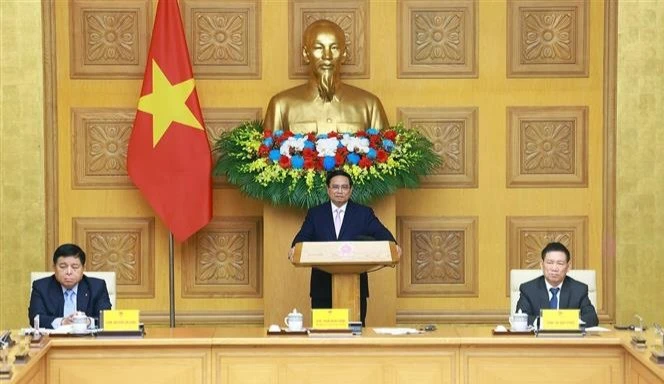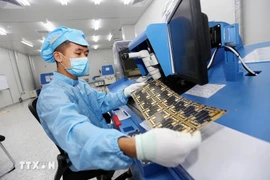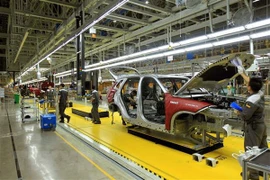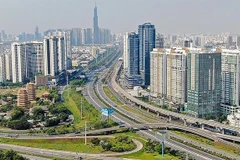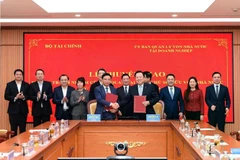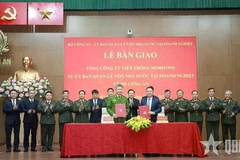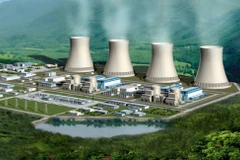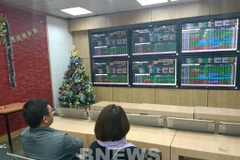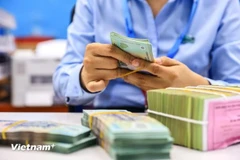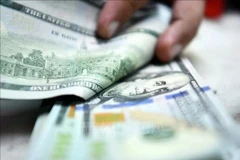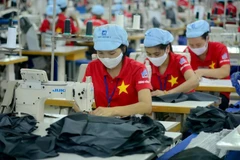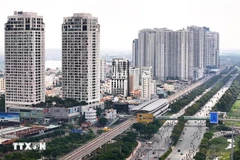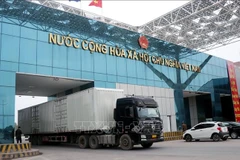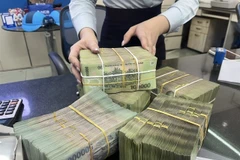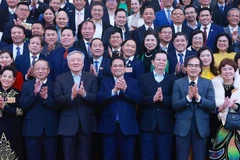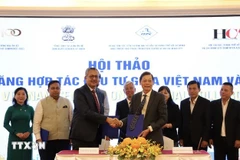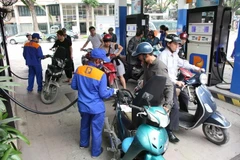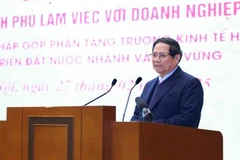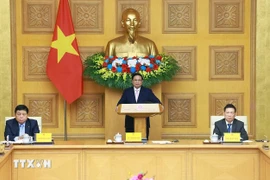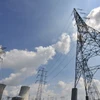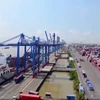Hanoi (VNA) – Vietnamese and Chinese enterprises should work to realise high-level agreements reached by the two countries through specific programmes and projects, with tangible outcomes, Prime Minister Pham Minh Chinh said.
During a dialogue with Chinese companies in Hanoi on February 28, PM Chinh encouraged them to step up technology transfer, enabling Vietnamese firms to join the global value chain and expand their investment horizons.
He called for increased investment in traditional growth drivers such as investment, exports, and consumption, while also fostering new growth engines, especially in semiconductor, artificial intelligence, cloud computing, the Internet of Things, optoelectronics, quantum technology, biotechnology, new materials technology, and high-value services like digital payment solutions.
The Chinese enterprises were asked to continue providing Vietnam with valuable insights to refine its institutional framework and share smart governance expertise.
The PM also highlighted critical areas for investments, including clean and renewable energy, transportation infrastructure such as railways, airports, seaports, and highways, as well as industrial parks and economic zones. He suggested they should promote digital payments, expand the scope of local currency payments, invest in financial centres, advance green finance, and boost two-way trade via the establishment of border economic zones and smart border gates.
Vietnam, he assured, is committed to protecting the legitimate rights and interests of enterprises, ensuring their equal access to policies, and fostering a pro-business climate grounded in the principles of "harmonising interests and sharing risks". This approach aims to balance the interests of the State, businesses, and citizens alike.
Highlighting Vietnam’s macro-economic stability marked by controlled inflation, manageable public, foreign and sovereign debts, stable exchange rates and favourable interest rates, he announced the country’s target of achieving 8% growth this year, paving the way for double-digit growth in the coming years.
To achieve this, all sectors, localities, units, businesses and citizens must demonstrate strong determination and take drastic actions. This requires the collective effort of the business community, including Chinese enterprises, he said.
To further nurture the Vietnam – China comprehensive strategic cooperative partnership, he proposed connecting the two economies and business communities via people-to-people exchanges.
Vietnamese and Chinese enterprises must take the lead in realising agreements reached by the two countries’ leaders through specific programmes and projects, in celebration of the 75th anniversary of diplomatic ties this year, he said.
The Government Office and the Ministry of Planning and Investment were tasked with collecting feedback from Chinese firms and issuing the PM’s official conclusion following the dialogue. Other specific tasks were also assigned to Vietnamese ministries and agencies to address proposals by the Chinese side in order to accelerate key projects, including railway projects linking the two nations.
Chinese Ambassador to Vietnam He Wei and Chinese firms praised Vietnam’s investment-friendly climate and immense growth potential, especially the Vietnamese Government’s consistent support and frequent dialogues with investors to tackle their challenges.

The Chinese companies expressed keen interest in expanding investments and raised proposals regarding projects in urban development, Vietnam-China railway connectivity, urban rail systems in Hanoi and Ho Chi Minh City, expressways, seaports, renewable energy, financial and banking centres, electric vehicle production, digital infrastructure, science and technology, and aviation. They also requested further streamlining of administrative procedures, labour permits, and visa policies to enhance operational efficiency.
Vietnam remains China’s largest trade partner within ASEAN and its fifth largest globally. China, in turn, stands as Vietnam’s biggest import market and second largest export destination.
China also leads in the number of newly-licensed projects in Vietnam. As of August 2024, China’s cumulative registered FDI in Vietnam reached 29.1 billion USD across 4,865 active projects, ranking sixth among 149 countries and territories investing there.
While Chinese firms initially focused on Vietnam’s processing and manufacturing industries, including home appliances, leather and footwear, and apparel, they are now actively exploring opportunities in energy, construction, infrastructure, electronics, automobiles and finance-banking./.
